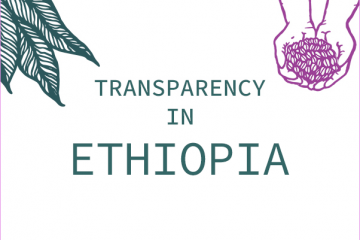Morten has written a good overview on where we started and what we want to achieve with transparency. Joanne has gone in depth with an informative and thoughtful post focused price discovery in origin, to give an indication of what price specialty coffees are actually fetching in different origins, and to define what is a good price and what is a fair price, separated from the C price.
I’d recommend reading both of these to see where we’re at on transparency now. But as I am the resident historian and good-ol’-days guy at Nordic Approach, I wanted to share a story from the early days of NA that relates to risk, prices, and transparency.
We did a bit of price discovery ourselves in 2012 on the demand side. We wanted to know: what are roasters willing to pay for quality and traceability? As you will see, this was more than a thought experiment…
Morten started Nordic Approach in late 2011. He moved his family to Africa for 5 months to solidify producer relationships and build new ones for his new importing company. He secured financing and started to buy coffees in early 2012, around which time I started discussing projects with Morten and Tim. I started more or less full time in June 2012, around the same time our first coffees arrived in Norway.
Many people may not remember this if they’ve entered coffee after 2011, but during this time, the New York C price looked like this:
- When Morten was in Africa in late 2011, the C price was north of $2.50
- When Morten bought the first coffees in early 2012, the C price was around $2.20
- When the coffees arrived to Europe and I started, the C price was around $1.80
- By Christmas it was $1.60, and in the next main buying season $1.40
- By the time coffees arrived in Summer 2013 the C price was $1.20
- Around Christmas 2013 it jumped back to $2.00 nearly overnight
None of this had anything to do with us, unluckily and luckily. The C prices were moving primarily based on speculation and Brazil harvest forecasts. We hadn’t even really started buying coffees in Brazil!
We were trying to buy exceptional coffees from trustworthy and progressive producers, the kind of coffees that would be worth the price we were paying for them. In some cases we succeeded, in some cases we failed, and in some cases we succeeded (in buying great coffees) and failed (in selling them or convincing enough roasters to see things our way).* Footnote: I will buy you a beer if you bought Debello from us in 2012.
Others who had hedged their purchases against the C price were able to sell their coffees more cheaply in the market. We were hoping to sell out of Ethiopia, Kenya, El Salvador, and Honduras by Christmas 2012. In reality, it took us until about the end of 2014 to sell all the 2012 coffees we had bought, and it took more or less all of 2013 and 2014 to claw our way back into the black.
Luckily this made us focus on some of our core values. We were able to make the case that paying good prices to farmers was worth it to get fantastic quality coffees, and fortunately our customers agreed. And the producers who we bought from in those first years remembered us when others dropped their prices significantly and we were still able to buy coffees at a good level that is solidly above the cost of production.
Producers and importers are pretty different, but one thing they have in common is that both are taking risks — producing or buying coffee for import without necessarily knowing who will buy it.
From the beginning, Nordic Approach has been paying great prices to farmers for great coffees. The idea is that premiums for great quality incentivises progressive producers to see a future in producing quality coffee — not just “getting by”, but actually being able to reinvest and prosper.
I see our role as the custodian of that quality. We try to do our part by being obsessive about quality control and smart supply chains, customer service, problem solving, and pushing the boundaries past what is industry standard. But most importantly, we connect quality obsessed roasters to the coffees they want and to the people who produce them. The closer we build those bonds, the stronger we can make the supply chain.


0 Comments